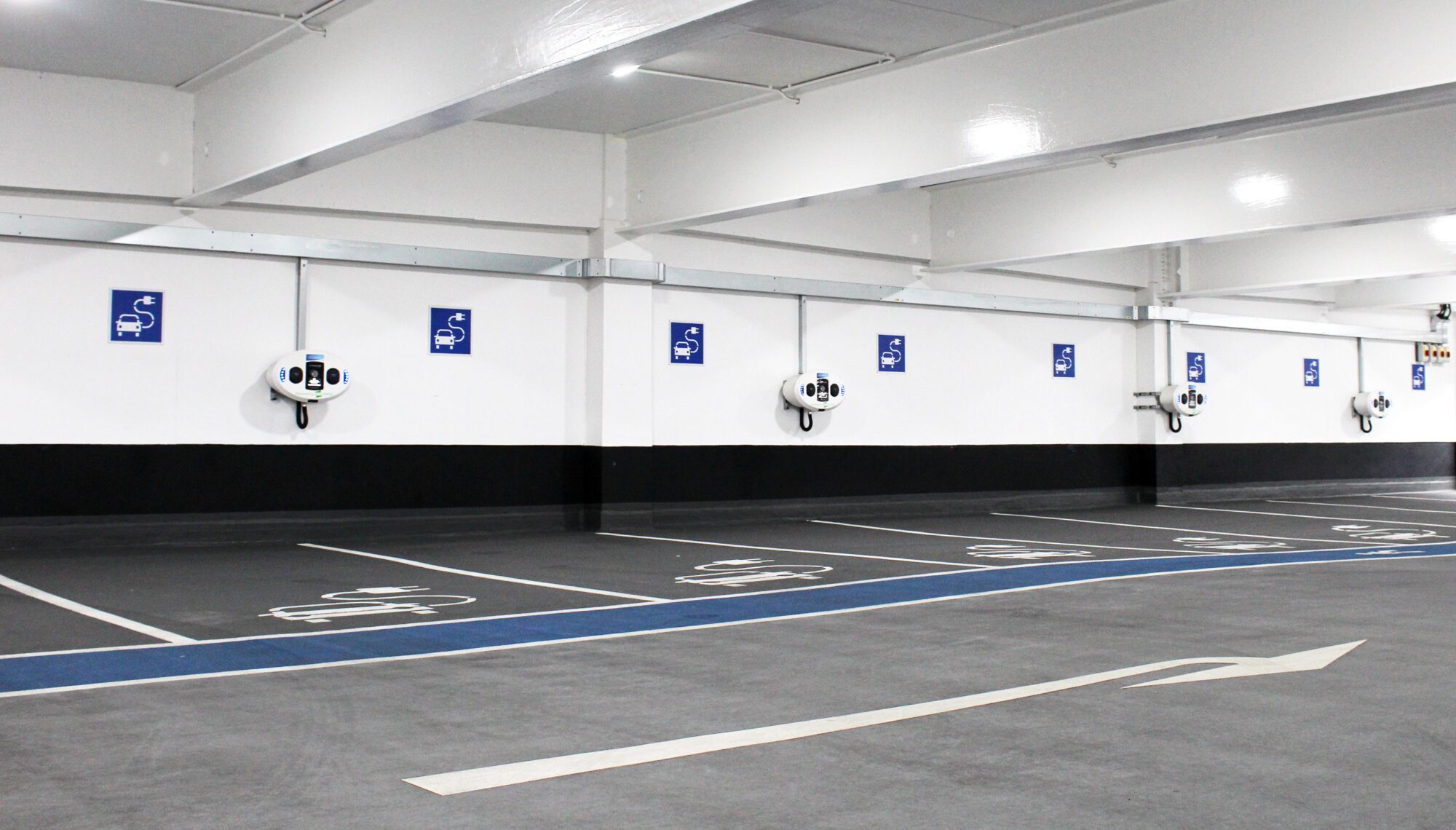How European apartment dwellers can charge up and drive electric
Blog
New EU rules on private charging and how Member States can legislate more ambition
Yesterday, March 12, the European Union Parliament voted to approve the Energy Performance Building Directive (EPBD), a key legislation that includes requirements for the installation of private home charging for electric vehicles (EVs) in apartment buildings and destination charging at places like commercial centers and offices. While an important first step, all EU Member States have 2 years to translate the EPBD into national legislation and this is an opportunity to strengthen the requirements and help ensure sufficient and equitable charging solutions for apartment residents.
The EPBD comes at an opportune time. While EV sales are ramping up in Europe and reached a 23% share for 2023, gaps in charging accessibility, especially in apartment buildings, could hinder widespread EV adoption. For many reasons, including the need for a private parking space with an electrical outlet, the need to get consent from other residents to install a charger, and sometimes the cost of installing your own charger, home charging is less common in apartment buildings. For example, a 2022 survey conducted by the electricity utility Enedis in France showed that while 88% of EV owners living in houses recharged their EV mainly at home, only 49% of EV owners living in an apartment did so.
EPBD Article 12 concerns charging infrastructure for buildings, and it is the principal EU law dealing with private charging. The legislation includes mandates for new residential buildings and those undergoing major renovations, in both cases if those buildings have more than three parking spaces for cars. It requires pre-cabling at least 50% of parking spots—with enough power available to support the simultaneous use of all recharging points—and ducting for the remaining ones; mandates the installation of at least one recharging point for new buildings; and requires all recharging points to be interoperable, capable of smart charging, and “where appropriate,” bidirectional charging. The agreement also includes language around the “right to plug,” in that it asks Member States to streamline installation procedures and remove regulatory barriers such as the consent of the landlord or co-owners. However, existing buildings are almost completely left out.
Some definitions will help here. Pre-cabling refers to all measures that enable the installation of recharging points later; this includes cable routes and space for transformers and electricity meters. Ducting means putting the conduits in place without the cables. “Right to plug” means that building owners and managers must approve charger installation requests from unit tenants or owners, provided they meet reasonable requirements (e.g., building safety standards, parking space availability, and no significant alterations to the building’s appearance or esthetic). Under right to plug, the person seeking to install the charger might have to bear all the costs, and these could be as low as a couple hundred euros or as high as a couple thousand euros. Major renovations can be defined by Member States in two ways: either in terms of a percentage of the surface of the building envelope undergoing renovation (more than 25%) or in terms of the renovation cost compared to the value of the building (higher than 25%).
Pre-cabling a building’s parking at the time of construction is the cheapest and most efficient solution; retrofitting costs can be up to nine times higher than pre-cabling installed during the construction phase. But as data from major markets in the European Union shows the average renovation rate of residential buildings is about 1.5% per year, it could take more than 66 years before all parking spaces in those buildings are EV-ready. Based on the European Commission’s impact assessment report, this results in only 2% of residential buildings and 4% of multi-unit dwellings (apartment buildings) subject to EPBD residential charging deployment requirements in 2030, and that goes up to 18% of residential buildings and 36% of apartment buildings in 2050.
This matters because private overnight charging is usually the cheapest and most convenient way of recharging an EV. A recently published report showed that in Germany, a battery electric vehicle owner without access to private home or workplace charging pays up to 65% more to refuel their vehicle than those with private charging in a house. The difficulties surrounding private charging in apartment buildings could also disproportionately impact households on the lower end of the income spectrum, as those are in rented apartment building units at higher rates than higher-income households.
As the EPBD lacks requirements for the current stock of residential buildings, countries and cities that want to help ensure that apartment dwellers have convenient charging can go beyond it. The 2 years that Member States have to translate the EPBD into national legislation are an opportunity to support an equitable EV transition by maximizing overnight charging access for apartment residents. For example, Member States could specifically mention existing buildings in their legislation and require or incentivize housing companies to conduct a financial assessment of the possibility of making their parking lots 100% EV-ready. Additionally, they could require local authorities to work with housing companies on their territory to provide solutions to all residents and provide guidelines on how to do so. Finally, they could implement the strategies I describe in this companion piece, which highlights solutions for residential parking lots that have not been pre-cabled at the time of construction.
Author
Related Publications

How European apartment dwellers can charge up and drive electric
The second in a two-part blog series explores the implementation of the European Union’s Energy Performance Building Directive (EPBD) for electric vehicle (EV) charging in apartment buildings.

